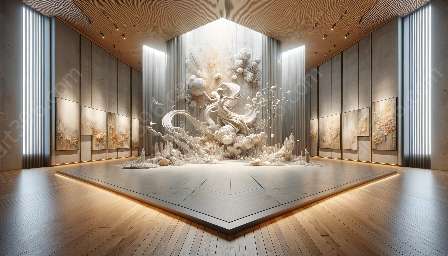Art installations are a powerful medium for cultural representation and societal impact. By integrating diverse cultural elements and narratives, art installations have the potential to influence attitudes, foster dialogue, and celebrate the richness of different cultures.
Understanding Cultural Representation in Art Installations
Art installations that prioritize cultural representation serve as a platform for artists to express their unique identity, heritage, and experiences. Through the use of diverse materials, symbols, and visual storytelling, artists convey profound messages that resonate with audiences from various cultural backgrounds.
Shaping Cultural Narratives
Art installations reflect and challenge societal norms, offering alternative perspectives and initiating discussions about cultural diversity, inclusivity, and social justice. By confronting stereotypes and addressing historical inaccuracies, these installations contribute to the redefinition of cultural narratives and promote a more nuanced understanding of cultural identity.
Impact on Society
The presence of culturally representative art installations in public spaces can significantly impact society by promoting cross-cultural understanding, empathy, and appreciation. These creations stimulate dialogue and encourage viewers to engage with unfamiliar cultural perspectives, fostering a sense of unity and shared humanity.
Influential Art Installations
Several prominent art installations have left a lasting impression on society through their powerful portrayal of cultural themes. For example, The Gates by Christo and Jeanne-Claude transformed New York City's Central Park into a vibrant spectacle, symbolizing unity and diversity through its saffron-colored arches. Another notable installation is Maya Lin's Vietnam Veterans Memorial, which serves as a contemplative tribute to the cultural impact of war and sacrifice.
Challenges and Opportunities
While cultural representation in art installations has the potential to enrich society, it also raises important considerations regarding authenticity, appropriation, and the responsible portrayal of cultural elements. Artists and curators must navigate these complexities with sensitivity and respect to ensure that their work contributes positively to societal discourse.
The Future of Cultural Representation in Art Installations
As society continues to evolve, the role of art installations in shaping cultural narratives and fostering meaningful societal change becomes increasingly pivotal. By embracing diversity, challenging stereotypes, and promoting inclusivity, art installations have the capacity to shape a more harmonious and empathetic global community.

